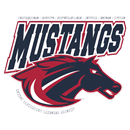Dual Language Immersion Program
Kindergarten
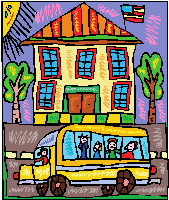
Language Goals
Babies and young children learn language through the loving interactions of family and the exciting world they are exploring. At first they do not understand the words their parents say to them, but over time and through a variety of experiences and interactions, they learn language. When we immerse learners in a new language environment supporting their understanding (rather than teach them in a foreign language model) they are able to acquire a second language much the same way they learned their first language. This is called “Natural Language Acquisition” theory. This way of learning language requires meaningful, natural interaction in the new language with the focus on understanding the message rather than its form.
Kindergarten experiences are rich in activities with visually demonstrable subject matter that convey the “message” in a comprehensible manner. Students are actively involved in learning experiences that foster positive interdependence with other students in the class. The teachers speak in short, simple sentences and they repeat themselves using the same patterns or rephrasing. Teachers slow their speech, but they do not distort their words or intonation. Teachers model language to learners by expressing for them what they seem to want to say. Language is not corrected for form, but for better understanding.
Major Academic Goals of Kindergarten
Early Literacy Skills & Concepts
Spanish
Language arts instruction focuses on developing early literacy skills that prepare students for reading and learning. Your child will learn the alphabet and the sounds of letters and words in order to read simple stories and informational books. Your child will learn the beginning skills to comprehend and analyze what they read during teacher read alouds and collaborative discussions. Discussions with adults and peers will foster speaking and listening skills needed to collaborate, learn, and share ideas clearly. Kindergarten students will begin to develop writing skills by using a combination of drawing, dictation, and writing to share information. They will learn to write short compositions that tell a story, share an opinion, or present information.
Mathematics instruction focuses on basic computation, procedures, and conceptual understanding. Your child will be introduced to the relationship between numbers and quantities. Students will build a strong place value foundation as they count, represent, and compare whole numbers using numerals, words, and objects. Students will use knowledge of numbers to learn addition, subtraction, and solve word problems within 10. They will also learn to identify, describe, and model objects in their environment by using simple shapes and vocabulary.
English
- Phonemic Awareness, rhyming, songs
- Vocabulary Development
- English language Development for English learners
What You’ll Observe
Your child will quickly learn that his/her teacher understands everything said in English but will respond only in Spanish. Teachers speak Spanish in front of their students and will only speak English to parents privately or by phone. While it takes a few weeks of adjustment, by the end of the first three weeks they feel comfortable and successful as their understanding is confirmed and their interactions encouraged. At the end of four or five weeks, students are confident and comfortable with classroom routines. They will participate successfully in all activities that are designed to develop their concept learning as well as the simple vocabulary of daily classroom life. Thematic instruction helps develop understanding as they acquire more language.
Approximately four months into the year, your child will be able to understand the majority of what is said in the classroom. By the end of the year, your child will probably be reading short phrases and singing songs. Children may also be writing simple words and short sentences, depending on their development.
Homework
With parent instructions in both languages, homework is designed to practice skills and concepts learned in class. Homework will probably include handwriting practice, simple math pages and thematic family activities. Homework should last no longer than 20 minutes, four days a week, plus reading aloud time each day.
Reading
The “rule” about reading is doing it consistently in order to develop a joy of reading in your child. Reading is the single most important way you can support your child’s success in school. Go to the library and check out a basket of books. Borrow books from your child’s teacher. Trade with neighbors, but read, read, read! Don’t try to teach English phonics and reading at this point, just enjoy books.
What do I read?
Read simple books aloud to your child in Spanish. If you don’t speak Spanish yourself, team with a Spanish speaking family to read to their children in English, while they read to yours in Spanish. Read aloud picture books and short chapter books that are interest and age appropriate, to develop vocabulary and comprehension in English.
Frequently Asked Questions
Why won’t my child speak Spanish when I ask him/her to?
This is still a receptive language development phase. Your child will probably not cooperate with your requests to “show Grandma how well you speak Spanish,” but you will observe a developing understanding as you see your child interacting with the teacher, classmates or Spanish speakers in the community. We develop language because it is “necessary for our survival” and being able to communicate with teachers and others at school in English allows the students to develop their receptive understanding, while not feeling anxiety about speaking in English.
Sample Kindergarten Schedule
(90 Spanish, 10 % English)
Schedule TBD
First Grade
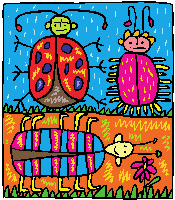
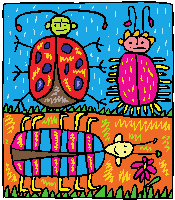
Major Academic Goals
Language arts instruction focuses on developing fluent and skillful readers and writers with strong speaking and listening skills. Your child will continue to learn the letters and sounds that make up words as well strengthen decoding, word recognition, and encoding skills that support reading and writing. Students will continue to increase their academic vocabulary as well as comprehend and analyze a variety of literature and informational text. Students will think, talk, and write about what they read in stories, articles, and other sources of information. Students will apply knowledge of language conventions as they write for different purposes. Your child will develop communication skills during collaborative discussions with peers and adults.
In mathematics, students will work with whole numbers and place value. They will extend their knowledge as they group numbers into tens and ones, learn to add and subtract up through 20, and develop an understanding of whole numbers and place value within 100. Your child will use charts, tables, and diagrams to solve problems. Students will work with shapes to compose new shapes as well as partition shapes to create equal shares.
Language Goals
The second year of language acquisition continues developing as it began in Kindergarten. Students are gaining conversational ability and by the end of the year, the children are understanding what they are learning in the context of thematic lessons and activities. They comprehend face-to-face discussions and teachers are still using situations, gestures and intonation to support their understanding. In linguistic terms, this is known as “Basic Interpersonal Communicative Skills” or BICS. This initial proficiency is generally mastered by the beginning of second grade when more complex language skills are beginning to develop.
English Language Development
English Language Development include basic concepts in English, such as calendar, counting, enjoying literature, developing concepts and sequences from stories, retelling stories, and phonemic awareness activities that include poems, chants, and songs.
What You’ll Observe
Some first graders begin the year reading while others have not yet started. This is quite normal and the teachers guide the children to develop their literacy through a series of whole and small group activities designed to meet a variety of developmental reading levels. The students listen to many stories read by the teacher. In guided reading groups they read “little books” and text-books consisting of anthologies of authentic Spanish literature. They also do a lot of choral reading of charts, poems and songs, as well as practice reading independently. In first grade, independent readers usually read aloud to themselves, so the environment is not silent but alive with the voices of readers learning to sound out new words and read fluidly. Each child will develop a level of independent reading by the end of the year.
Young writers are busy every day in a variety of shared, independent and practice writing activities that develop their thinking and expression, while learning fundamental spelling patterns and punctuation.
The teachers are expanding the children’s vocabulary and stretching their understanding by continuing to organize English instruction around content themes. Language is made comprehensible with the same techniques used last year, but you may observe that the pace is quicker. Students have learned to ask for clarification when they don’t comprehend a concept or word, and peer assistance becomes even more important. Cooperative learning and independent work give students the opportunity to work together. Students’ language and leadership abilities are carefully taken into consideration as they are grouped.
You may observe your child using a bit more Spanish but chances are, they will still be shy about using Spanish outside the classroom. In fact, the majority of first grade English speakers are still answering and participating in classroom discussions in English. We expect this and know that as they develop more language skills, they will be more comfortable using their Spanish.
Homework
Homework is in Spanish with English translation when necessary. Skills practice and independent activities reinforce what your child is learning in the classroom. Your child should be reading 20-30 minutes a day in Spanish. You may read aloud to them in English but don’t emphasize their reading in English yet. Homework should not take longer than 20 minutes plus independent reading time.
If you don’t already have a homework routine, this is the year to establish one. One highly effective routine many families have adopted is upon arrival at home, a snack or dinner, immediately followed by written homework, then reading time and playing only after homework responsibilities are complete. Before bedtime parents can read aloud. This prevents both students and parents from trying to deal with homework late in the evening when everyone is tired from a busy day. An established routine develops good work habits that can be maintained through high school.
Frequently Asked Questions
My child wants to read English books. Should I allow this?
We encourage you to maintain reading for 20-30 minutes in Spanish books, and most families find they must organize homework/reading time accordingly. After that, if your child is interested in reading in English, allow him/her to explore and enjoy English books. Please don’t enroll your child in a formal English reading program. They will be solid readers in English, but this does not need to begin until third grade. Maintaining the focus on Spanish for the first few years pays off later in fourth and fifth grades when the children have developed sufficient vocabulary choose and enjoy chapter books in both languages.
Sample First Grade Schedule
(90 Spanish, 10 % English)
8:30 A.M. - 10:00 A.M. Spanish Language Arts
10:00 A.M. - 10:20 A.M. Recess
10:20 A.M. - 11:40 A.M. Spanish Language Arts (including Writing Block)
11:40 A.M. - 12:20 P.M. Lunch
12:20 P.M. - 12:50 P.M. ELD (*English Instruction Time)
12:50 P.M. - 2:10 P.M. Math
2:10P.M. - 2:50 P.M. Science/Social Science/PE
2:50 P.M. Dismissal
Second Grade


Major Academic Goals
In language arts instruction, the focus is on developing lifelong readers, competent writers, and effective communicators. The emphasis of reading instruction is on fluency, comprehension, and analysis. Students will think, talk, and write about what they read in a variety of texts, such as stories, books, articles, and other sources of information. Your child will learn new vocabulary and academic language as they read and participate in class discussions. In writing, students will learn how to develop a topic and strengthen their skills by editing and revising stories, essays, and reports. Compositions will become longer and more attention will be given to organization.
In mathematics the focus is to extend student’s understanding of place value within 1,000. Students will use this place value understanding to solve word problems, including those involving length and other units of measure. Your child will continue to work on addition and subtraction by, quickly and accurately adding and subtracting numbers up through 20 and also working with numbers up through 100. Students will use simple concepts of multiplication and division. Students will measure the length of objects by using appropriate tools, and identify shapes and their attributes.
Language Goals
By second grade, your child is conversational in Spanish and easily understands almost everything said in the classroom by both students and teacher. This language phase builds the foundation for the academic Spanish that is acquired over the course of the next five years. Vocabulary development is essential and by the last trimester students are required to use their Spanish to communicate orally in the classroom. Teachers will motivate students to speak more and use a variety of incentives to illicit conversation in Spanish.
English Language Development
Second graders will have English time for 20% of their schedule or about 60 minutes a day. During this time, their developmental needs are addressed with special attention to preparing them for reading in English beginning in third grade. During the third trimester, students are introduced to English phonics, working with the English Language Arts and Foundational Skills program. Generally, the students will switch to another second grade teacher who provides them with English instruction.
What You’ll Observe
The second grade day is busy developing fluency and comprehension in reading. The schedule includes guided reading groups geared to individual reading development stages, as well as whole group activities related to literature and social studies themes. The other structures in the classroom that support reading and writing development include dictation, where students write and correct standard Spanish, grammar and spelling exercises, as well as vocabulary, spelling and dictionary skills.
Although we are not directly teaching your child to read in English, many children pick up English reading independently, learning the phonics from their knowledge of Spanish and English. At this point we don’t discourage the children from reading in English, but they must continue to read 30 minutes a day in Spanish to encourage their reading comprehension and grammar. Teachers see a big difference in the students who are reading daily in Spanish. Their writing and grammar are more developed than students who read less.
Your child may translate for you when presented with an opportunity to be helpful. In the classroom, you will observe use of both languages in informal conversations and in group discussions by both native and non-native speakers.
Homework
Homework for all students is similar. Homework might be differentiated to meet the needs of all children. English instructions are included with homework, but for the most part, the students should be able to work independently. Expect spelling, vocabulary, sentence/paragraph writing, math practice, comprehension exercises, and reading components to homework. At this grade level, homework should still be kept at 20-25 minutes. In addition to the assigned homework, students are expected to read in Spanish for 30 minutes a day.
Frequently Asked Questions
My child wants to read English books. Should I allow this?
We encourage you to maintain the reading 20-30 minute practice in Spanish books, and most families find they must organize homework/reading time accordingly. After that, if your child is interested in reading in English, allow him/her to explore and enjoy English books. Maintaining the focus on Spanish for the first few years pays off later in upper grades when the children have developed sufficient vocabulary choose and enjoy chapter books in both languages.
My neighbors and my child’s Sunday school teacher sometimes think it is crazy that my child is not reading and writing in English as a second grader. What should I say to them?
This is a common issue for all [Two-Way] parents. Kindly pointing out that your child reads and writes in Spanish usually sets the tone for an interesting discussion about the benefits of being bilingual and the long terms goals of the program. Reassure them that the design is to introduce and refine English literacy skills in third grade and that your child is doing very well in Spanish. Remind them that you have every confidence that English will come and that your child is developing academic literacy in two languages not just one as do most children.
Sample Second Grade Schedule
(80% Spanish, 20 % English)
8:30 A.M. - 10:00 A.M. Spanish Language Arts
10:00 A.M. - 10:20 A.M. Recess
10:20 A.M. - 11:10 A.M. Spanish Language Arts (Including Writing Block)
11:10 A.M. - 11:40 A.M. Social Science/Science/Art/Computers/Library
11:40 A.M. - 12:20 P.M. Lunch
12:20 P.M. - 1:40 P.M. Math
1:40 P.M. - 2:10 P.M. ELD (English Instruction)
2:10 P.M. - 2:40 P.M. PE (English Instruction)
2:50 P.M. Dismissal
Third Grade

Major Academic Goals
In language arts, it is crucial that students read fluently, effortlessly, independently, and enthusiastically. Students will think talk, and write about what they read in a variety of articles, books, and other texts. Increased emphasis is placed on vocabulary acquisition, comprehension strategies, text analysis, language conventions, and writing. Students learn to refer to text when participating in collaborative discussions to support claims and ideas. In writing, students will pay more attention to organizing information, developing ideas, and supporting ideas with facts, details, and reasons.
In mathematics, students deepen their understanding of place value and their knowledge and skill with addition and subtraction. Your child will learn the concepts behind multiplication and division of whole numbers and apply problem-solving skills and strategies for multiplying and dividing numbers up through 100 to solve word problems. Students develop and understanding of fractions and numbers, concepts of area and perimeter of plane figures, and attributes of various shapes.
Language Goals
By third grade students have both languages with the same teacher and the day is divided according to language, when students are required to speak the target language during that period. Students are very fluent by this time, and this gives both groups the opportunity to use what they know, being “pushed” a bit more with the structured language time. They continue to develop their vocabulary and fluency as well as academic language in both English and Spanish.
English Language Development
Third graders will have English time for 30% of their schedule or for about one and 1/2 hours a day. Activities are integrated into the academic content and vocabulary development is a part of all content and language arts activities.
What You’ll Observe
The third grade day includes guided reading groups geared to individual reading development stages, as well as whole group activities related to literature and social studies themes. Math is taught in Spanish, while reading groups are conducted in both Spanish and English. Work produced is in either language and there is an emphasis on strategies that transfer between them.
Homework
Homework for all students is similar, with possible differentiation to meet the needs of all children. English instructions may be included with homework, but for the most part, the students should be able to work independently. Expect spelling, vocabulary, sentence/paragraph writing, math practice, comprehension exercises, and reading components to homework. Homework at this level should not exceed 30 minutes per day. In addition, Students are expected to read in Spanish for 30 minutes a day (although they may choose to occasionally practice their English reading). This ensures proper vocabulary and comprehension development necessary for the increasingly challenging level of academic work in their second language.
Frequently Asked Questions
My child is spelling with Spanish phonics! How long will it take for him to become better at English spelling?
Spelling in English is complex and it takes students a few months to become more familiar with the spelling rules and patterns that cover the many sounds and ways the same sounds can be written. With more practice and explicit, systematic instruction, spelling improves and will continue to develop for the coming years. We usually see the majority of students stabilize their English spelling by the end of the year.
Do I need an English tutor or program to make up for “lost time” with English?
Not usually. Remember it isn’t lost time, just delayed. Most literacy skills developed in Spanish transfer intact to English literacy skills. It is usually the phonics and complex spelling patterns of English that takes longer time to develop. Most students transition well from Spanish to English and the more English they know, the easier it will be for them to attain the reading practice that helps their skills. English language development is more important than ever at this time, so for English learners this transition is sometimes difficult. Keep reading and practicing spelling and vocabulary.
Sample Schedule for 3rd Grade (70% Spanish, 30 % English)
8:30 A.M. - 10:00 A.M. Spanish Language Arts
10:00 A.M. - 10:20 A.M. Recess
10:20 A.M. - 11:40 A.M. Math
11:40 A.M. - 12:00 P.M. PE
12:00 P.M. - 12:40 P.M. Lunch
12:40 P.M. - 1:40 P.M. English Language Arts (English Instruciton)
1:40 P.M. - 2:10 P.M. English Language Development (English Instruction)
2:10 P.M. - 2:50 P.M. Social Science/Science/Art/Library
2:50 P.M. Dismissal
Fourth Grade

Major Academic Goals
In language arts, there is a focus on academic language and domain-specific vocabulary that support reading and listening comprehension, writing, and speaking. Students analyze the structure of informational text and how the author uses evidence to support points in the text. Students participate in collaborative discussions on fourth-grade topics and texts and deliver formal narrative presentations. In writing, your child will learn to create organizational structures that support purpose and audience. They will write longer, detailed informational texts and narratives. Students will learn to use technology to find information, discuss, and collaborate with others.
In mathematics, students will use large whole numbers to fluently add and subtract and to develop fluency with multiplication and division including quotients with remainders. Your child will continue working with fraction by creating equivalent fractions, adding and subtracting fractions with like denominators, comparing the size of fractions, and multiplying fractions by whole numbers. They will also begin to understand the relationship between fractions and decimals. Students classify geometric shapes based on properties such as parallel or perpendicular sides, angle measurements, and symmetry.
Language Goals
By this point students are expected to participate in discussion and express themselves in both languages comfortably, both in oral and written work. Students are still developing their language skills and are expected to respond in Spanish or English as the assignments dictate. There is an emphasis on strengthening students’ academic language through the content areas – math, social studies or science. Students who have been reading in Spanish all along have stronger language skills than those who have been doing more English reading.
What You’ll Observe
Fourth grade becomes much more intense in both language and academic expectations and many students feel overwhelmed at first. Not only is the work increasingly more challenging, but organizing their work and assignments in the classroom is important and a foundational skill for future school success. Your child may feel that [Two-Way] demands are too great and want an English only school. This is a predictable and common occurrence that we have seen develop in other programs. Once the first trimester of fourth grade is complete, adjustments are made and parents and children have made the next hurdle in the program. The level of Spanish/English required usually exceeds the bilingualism of the parents and teachers are principal coaches in writing and corrections for assignments.
Homework
Homework is in both languages and varies according to unit studies and projects. Watch for project packets with rubrics to help you guide your child through reports, many of which begin in the classroom. During the year the children may complete Explorer Reports, Literature Reports and California history assignments. The teachers always send home a description of expectations for these major projects and a schedule for completion. Daily homework should not exceed 30-40 minutes daily. In addition, students are expected to read 30 minutes. At this point, their reading can alternate between English and Spanish, but it is essential that they continue to read in Spanish as it will become a natural tendency for students to gravitate towards English reading.
Frequently Asked Questions
My child is having problems organizing his materials both in the desk and his backpack…. what can we do to help him?
It really supports both your job as parents and your child to sit down at the end of the day to debrief and review any paperwork (i.e. corrected homework, notices, assignments) that comes home. Your child should know if a certain assignment is complete, corrected and may be tossed. He/she should also show you any homework packets or project assignments and they should be noted on your family calendar. In the class, the teacher periodically coaches the students to clean up and organize but your reminders about keeping organize will also help, even if you are not in the classroom. The Daily Planner is your communication tool with teachers. If you have questions, write a quick note in the planner and the teacher should respond within a day or so. Staying current with the demands of 4th grade is key to managing the increased volume of work.
How do I know whether or not my child’s writing in Spanish is up to par when I don’t speak Spanish? How can I help with his/her writing?
The teacher should be making notations and corrections on the child’s work in the editing conferences. You can discuss the editing and improvements expected with the teacher on an individual basis. Some children are more prolific writers. Some struggle to express themselves. It is normal to have the challenge of writing in a second language make it seem harder. It is harder, but they continue to develop and grow in their ability to write and the teacher will discuss your child’s writing and document progress throughout the year. The teacher is your child’s main writing teacher for Spanish, but don’t forget that you are key in helping organize their ideas and motivate them to express their ideas. Some parents ask a bilingual friend to review the writing. Continue to support the child in developing ideas and an enthusiasm for the writing process and the ideas that motivate writers. Look at their English writing and enjoy knowing that they can write well in two languages!
Sample Schedule for 4th Grade (60% Spanish, 40 % English)
The day is split up into language specific content areas. The goal is to have students immerse themselves and practice both languages every day.
8:30 A.M. - 9:30 A.M. English Language Arts (English Instruction)
9:30 A.M. - 10:00 A.M. Science/Library/Computers (English Instruction)
10:00 A.M. - 10:35 A.M. English Language Development (English Instruction)
10:35 A.M. - 10:55 A.M. Recess
10:55 A.M. - 12:00 P.M. Spanish Language Arts
12:00 P.M. - 12:40 P.M. Lunch
12:40 P.M. - 2:00 P.M. Math
2:00 P.M. - 2:40 P.M. Social Science/PE/Music/Art
2:50 P.M. Dismissal
Fifth Grade
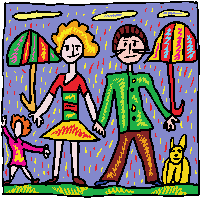
Major Academic Goals
In language arts instruction, your child will read a wide range of materials including literature and informational text. The focus is on deepening the comprehension and analysis of complex narratives and informational text. Students will learn academic language and domain-specific vocabulary through reading as well as apply their knowledge in writing and speaking. In writing, students continue to revise, edit, and write compositions and learn new approaches to improve writing. Students practice interpreting, gathering, organizing, and presenting information as they conduct research projects. Students improve their communication skills as they collaborate and discuss fifth-grade topics and texts.
In mathematics, students continue to build on the place value system by working with decimals up to the hundredths place. They will add, subtract, and multiply fractions, including fractions with unlike denominators. Your child will finalize fluency using the four operations with whole numbers. Students will continue to expand their geometry and measurement skills, learning the concept of volume and measuring the volume of a solid figure. They will graph points on a coordinate plane to solve real-world problems and interpret the coordinate value of a point.
Language Goals
Very similar to fourth grade, fifth graders continue to develop language skills with the expectation that they use both with ease and are capable of making corrections and revision in improving their work and expression. By this time, teachers are encouraging students to analyze and compare, differentiating language and spelling of English and Spanish.
What You’ll Observe
Your child may have two teachers and is required to switch between the two classes without losing track of work and responsibilities. That presents a challenge for some children, but they do very well having a single language model/teacher for each part of their studies.
Content reading in Spanish is tough! Students need to understand what they are reading and this may require additional practice and strategies both in class and at home. In preparation for continuation in the program, the rigors of academic work increase as do the need for independent responsibility and organization.
Homework
Students have homework in both languages. Students may receive two separate assignments (one from each teacher), so having the organizational skills is essential in order to keep up with the assigned work. The use of the Student Planner/Agenda is critical. As always, maintaining reading in both languages is a huge component to success in the program.
Frequently Asked Questions
Should my child continue in Two-Way?
Of course! If your child has been achieving well during these elementary years of the program, the true benefits of the program are reaped in the middle school years. The research shows that participants in [Two-Way Immersion] have math scores that are higher than their monolingual peers and that having had Spanish does not affect their English academic performance negatively (Thomas, Collier 1999).
Sample Schedule for 5th Grade (50% Spanish, 50 % English)
8:30 A.M. - 9:30 A.M. Spanish Language Arts
9:30 A.M. - 10:35 A.M. Math
10:35 A.M. - 10:55 A.M. Recess
10:55 A.M. - 11:15 A.M. Math
11:15 A.M. - 11:35 A.M. PE
11:35 A.M. - 12:40 P.M. English Language Arts (English Instruction)
12:40 P.M. - 1:20 P.M. Lunch
1:20 P.M. - 2:00 P.M. Social Science/Science (English Instruction)
2:00 P.M. - 2:40 P.M. ELD/Art
2:50 P.M. Dismissal
Sixth Grade

Academic Goals
In language arts instruction, students read and analyze a wide range of materials, including literature and informational text. The emphasis is on using a variety of comprehension strategies to compare, contrast, and integrate information from complex texts. Students improve communication skills as they collaborate and discuss sixth-grade topics and texts. In writing, students will continue to work on their use of language, sentence structure, and organization of ideas. They will also integrate information from different sources and respond to challenging content through written interpretation and analysis.
In mathematics, students will learn the concept of rates and ratios and use these tools to solve word problems. Students will work on quickly and accurately dividing multi-digit whole numbers as well as adding, subtracting, multiplying, and dividing multi-digit decimals. Students will extend their previous work with fractions and decimals to understand the concept of rational numbers to include negative rational numbers and integers. Students will also learn how to write and solve equations and apply these skills in solving multi-step word problems.
What You’ll Observe
The sixth grade year is full of many changes. It is possible that your child will have 2 (or maybe 3) teachers each day and will be required to move from class to class. Organization and material preparation are skills that will be expected in order to meet the demands of each class.
The content in English classes and Spanish classes will be demanding. Students will need their study skills to learn the content expectations for each class.
Homework
During sixth grade, homework will increase as well as the demands for being organized and prepared to complete assignments. Students will be expected to maintain their work for each class in binders and have a system of organization. Homework will be both in English and Spanish. In addition, for the language arts classes, students may be asked to maintain a log of independent reading in both English and Spanish.
Sample Schedule for 6th Grade (50% Spanish, 50 % English)
8:30 A.M. - 8:50 A.M. PE (English Instruction)
8:50 A.M. - 10:00 A.M. English Language Arts (English Instruction)
10:00 A.M. - 10:35 A.M. English Language Development/ART (English Instruction)
10:35 A.M. - 10:55 A.M. Recess
10:55 A.M. - 11:35 A.M. Science/Computers/Library (Social Science in Spanish)
11:35 A.M. - 12:40 P.M. Spanish Language Arts
12:40 P.M. - 1:20 P.M. Lunch
1:20 P.M. - 2:40 P.M. Math
2:50 P.M. Dismissal
